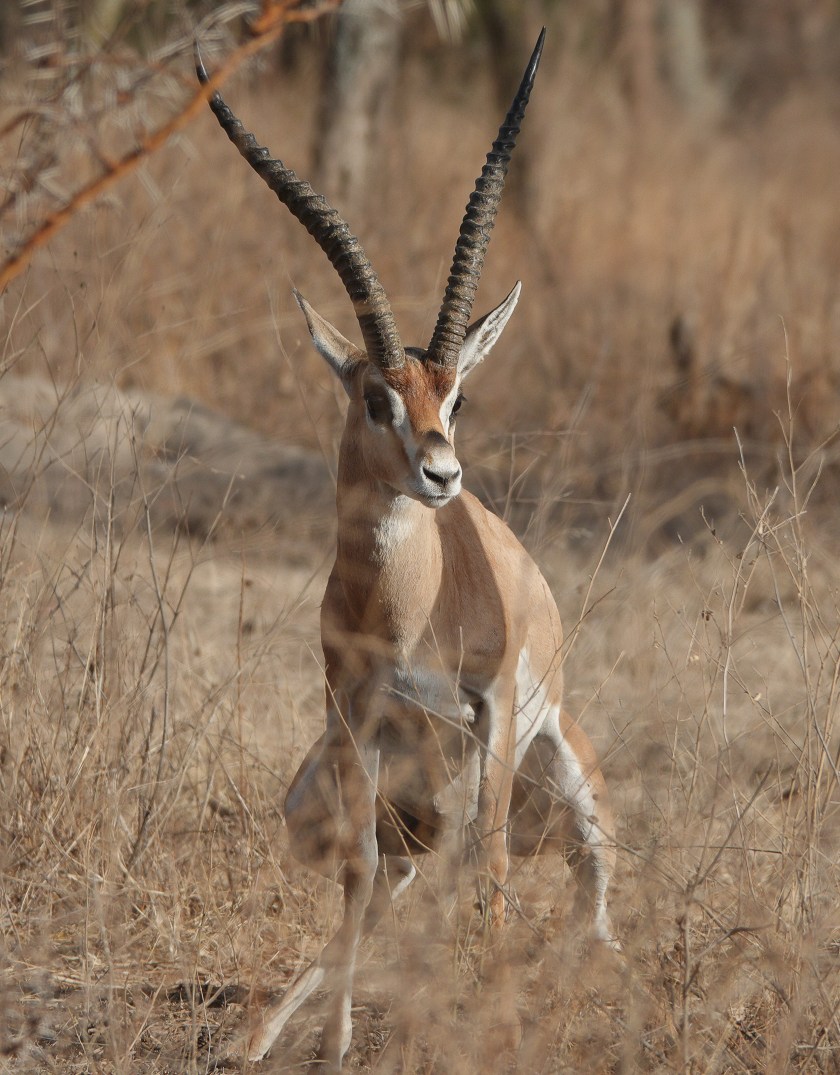Ethiopia abounds in animals that Americans and Brits might loosely call “deer”, but are more properly various species of antelope. We saw a range from the tiny Harar Dik-dik (2.4 – 4Kg), to the huge Mountain Nyala (whose males weigh up to 300Kg). I think today I’ll show you some gazelles, middle-sized antelopes that are a by-word for grace..
All gazelles are antelopes but not all antelopes are gazelles. Gazelles are distinguished by the fact that both sexes have horns, not just males, and the horns are unbranched. We saw Soemerring’s Gazelle, and two sub-species of Grant’s Gazelle. These Soemerring’s Gazelle females below have elegant horns. The males weigh up to 99lbs. Only found in the Horn of Africa and now extinct in Sudan, they are classified as Vulnerable.

This male Bright’s Gazelle, a sub-species of Grant’s Gazelle, is much more impressive. He may weigh up to 180 lbs, and his horns can be 32″ long. This chap had several females behind him in the brush.

This extraordinary posture, which he held for a long time, is ritualized behavior. The territorial male stretches and squats in an exaggerated manner while urinating and dropping dung. This apparently warns other males to stay away and reduces the number of confrontations.
The horns have a bony core, covered in keratin, and never fall off (unlike antlers). They are elegantly twisted, and placed in such a way that two fighting males cannot crack each other’s skulls, so their fights are displays rather than mortal combats.

The eyes in the sides of the head give them a wide field of view to detect predators. Pennisi (2019), an article in Science this year entitled “Grazing animals shown to inhabit a ‘landscape of fear'” writes :
“Imagine you are a grazing animal, an antelope or an elk. The lush vegetation of a streambank or an open plain tempt you, but predators lurk there. You avoid this “landscape of fear,” keeping to the safety of the forest and leaving the plants there to flourish. It’s a plausible but still controversial scenario for how predators can shape an ecosystem. Now, ecologists have taken advantage of the impact of war on Mozambique’s Gorongosa National Park to give the idea new support. After a surge in poaching during Mozambique’s civil war from 1977 to 1992 extirpated leopards and wild dogs from the park, a secretive antelope that used to stick to the forest started to forage out in the open. Ecologists now show that the untrammeled consumption has altered the park’s vegetation—and that the sound or smell of the predators was enough to reverse the effect, by driving the antelopes back toward the forest.”